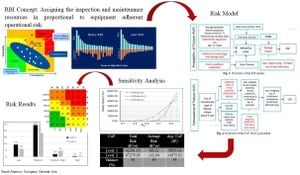The year 2025 is shaping up to be pivotal across various industries, presenting both challenges and opportunities as trends evolve rapidly. The cryptocurrency market, automotive design, and generative AI are on the brink of transformation, highlighting the need for innovators and investors to stay informed.
One of the most talked-about topics is the rise of new cryptocurrencies. Among these is Qubetics, which aims to tackle one of blockchain's most significant hurdles: interoperability. With plans for its mainnet launch scheduled for Q2 2025, Qubetics is generating buzz among crypto enthusiasts. Investors are eyeing its potential as early opportunities arise, but experts caution the need for thorough research prior to commitment. “While these new cryptocurrencies offer up exciting possibilities, they also operate in increasingly complex regulatory environments,” explains Dr. Michael Roberts, a blockchain researcher at MIT.
JetBolt is making headlines with its innovative zero-gas technology, promising to reduce transaction costs dramatically. Sarah Chen, crypto analyst, highlights its game-changing potential: "JetBolt’s zero-gas technology could be a game-auto-changer, potentially reduce dealing toll to near zero and micturate blockchain to greater accessibility for mainstream users." This makes JetBolt a notable contender for those investing within the cryptocurrency sphere.
Another project, Solaxy, is catching the attention of investors eager for promising growth within the altcoin universe. Although specifics about its technology remain under wraps, it is touted as one of the hidden gems of 2025, offering the promise of significant gains as the crypto market matures.
Meanwhile, the automotive sector is also witnessing innovation through the launch of the Colour, Materials & Finish (CMF) Trend Survey 2025. Hosted by Car Design News and Ultrafabrics, this initiative invites automotive designers to share insight on the transformations occurring within vehicle interiors and exteriors. This survey covers several missions: exploring color trends across various segments, analyzing innovations from PU leather to biobased materials, evaluating finishes and textures, and discussing cultural and consumer influences shaping design.
The findings of this survey will be revealed at the Car Design Dialogues taking place on April 8, 2025, showcasing industry leaders’ perspectives as they gather to discuss the future of automotive design. Participants will not only gain valuable insights from the collective feedback but also have the chance to enter a prize draw for their contributions. This initiative encapsulates the growing importance of designer input as the automotive industry gears up for rapid transformation.
Simultaneously, the world of generative AI is also on the cusp of breakthrough developments, presenting five notable trends for 2025. The mantra driving this evolution is encapsulated by the statement: “Build for where the industry is going, not for where it is.” Over the past year, generative AI has undergone significant shifts, with recent advancements pushing the boundaries of technology.
The concepts surrounding reasoning have emerged prominently as the next frontier for large language models (LLMs), with models like GPT-01 enhancing capabilities to breakdown complex tasks. This initiative not only advances reasoning workflows but also complements the decentralization ethos of Web3.
Another key trend involves increasing reliance on synthetic data for training models. This method offers scalability and efficacy, creating foundational datasets necessary for developing advanced reasoning skills. The potential here for Web3 is significant, as decentralized networks could be utilized to contribute compute power toward generating synthetic data.
The focus is also shifting toward midtraining and posttraining workflows, which are more conducive to decentralized infrastructures. By facilitating these efforts, Web3 stands to democratize AI development and ease dependencies on centralized resources.
The emergence of distilled smaller models reflects the industry's intent to optimize efficiency. Models now being developed are functional on common hardware, allowing for broader applicability and enabling Web3-based AI inference marketplaces to flourish.
Lastly, the demand for transparent evaluations continues to rise as generative AI rankings become questionable due to memorization of benchmarks. By leveraging blockchain technology to validate model performance, Web3 could provide solutions to verify effectiveness and heighten accountability within the AI sector.
Each sector’s capacity for adaptation and innovation will define their success as they navigate the trends of 2025. For investors and industry leaders alike, the emphasis lies on preparedness and responsiveness to the quickly changing landscapes of cryptocurrency, automotive design, and generative AI, emphasizing how interconnected these industries can truly be.



